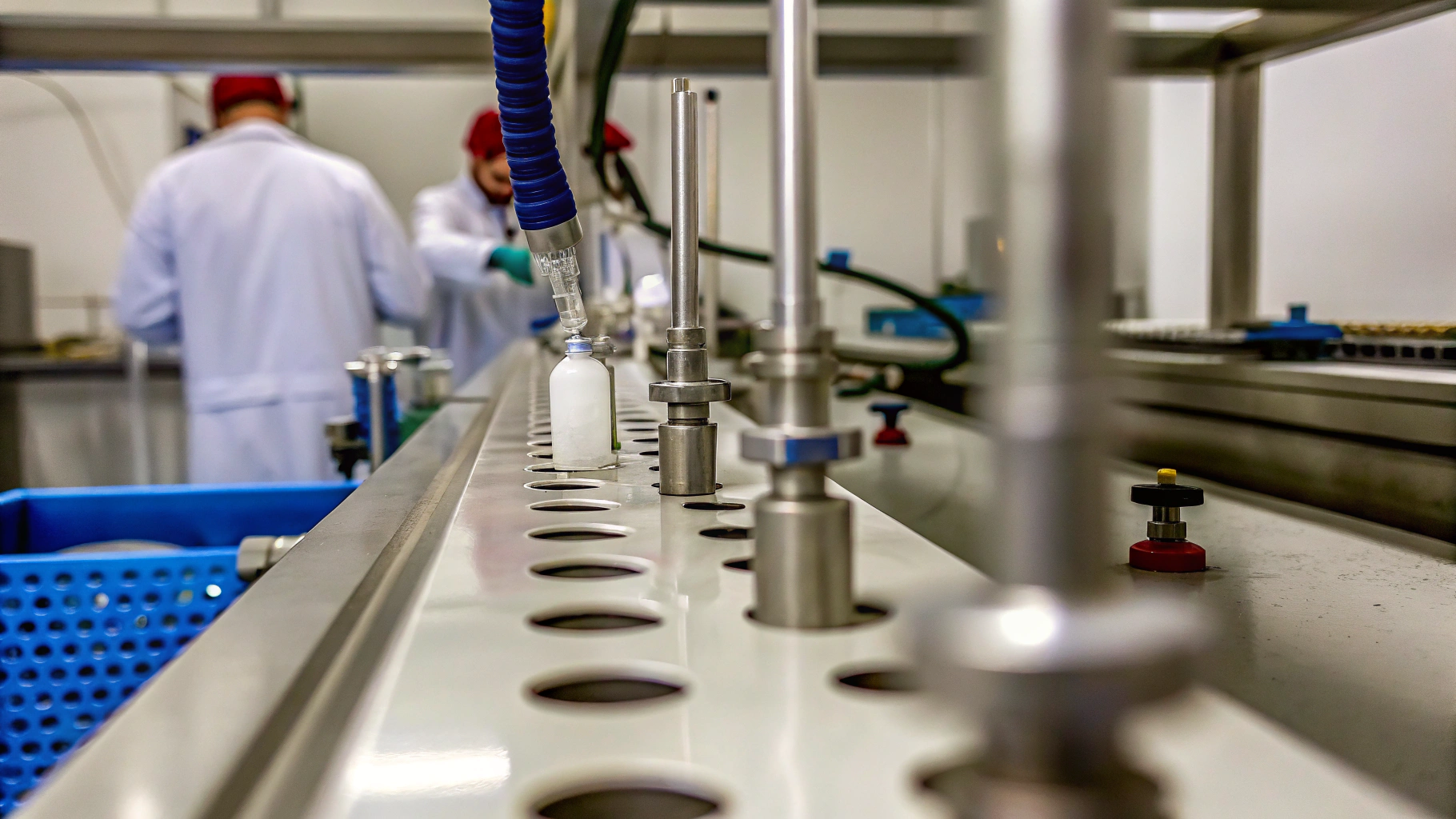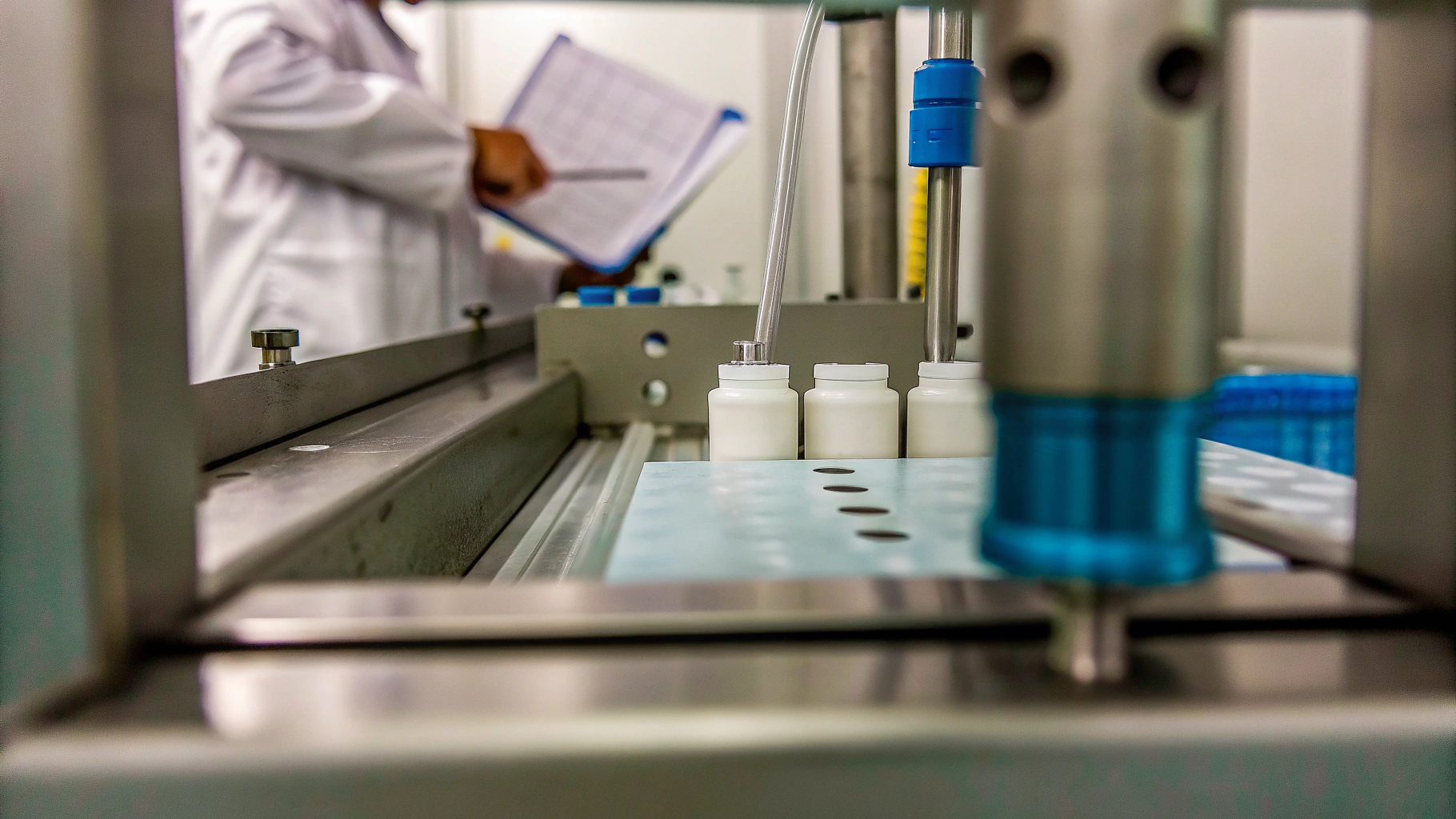Understanding CMC: The Medical Abbreviation and Its Importance

Overview
The article highlights the critical importance of the abbreviation CMC, which stands for Chemistry, Manufacturing, and Controls, in the pharmaceutical development process. CMC is not merely an acronym; it is a cornerstone of ensuring drug quality and safety. Through rigorous documentation and strict compliance with regulatory standards, CMC plays an essential role in regulatory submissions and the overall drug development lifecycle.
In the realm of pharmaceutical development, compliance challenges are significant. CMC addresses these challenges head-on, providing detailed solutions that enhance the quality assurance processes. This ensures that every aspect of drug production adheres to the highest standards, ultimately safeguarding patient health and maintaining public trust in pharmaceutical products.
To illustrate the effectiveness of CMC, consider successful compliance projects that have leveraged these principles. These case studies not only showcase expertise but also serve as compelling examples of how adherence to CMC guidelines can lead to successful regulatory outcomes.
In conclusion, the emphasis on CMC is paramount for any organization involved in drug development. By prioritizing Chemistry, Manufacturing, and Controls, companies can navigate the complexities of regulatory compliance with confidence, ensuring that they deliver safe and effective products to the market.
Introduction
Understanding the complexities of pharmaceutical development reveals a vital yet often overlooked component: CMC, or Chemistry, Manufacturing, and Controls. This critical framework not only ensures the quality and safety of drug products but also plays a pivotal role in regulatory compliance and the overall success of new therapies. As the pharmaceutical landscape evolves, the increasing intricacies of CMC practices raise essential questions about how organizations can effectively navigate these challenges while maintaining high standards.
What strategies can be implemented to enhance the robustness of CMC processes? Ensuring that drug products meet the rigorous demands of regulatory agencies ultimately serves patient needs. To address these compliance challenges, organizations must adopt comprehensive strategies that not only streamline processes but also reinforce quality assurance. By implementing best practices and leveraging cutting-edge technologies, companies can significantly improve their CMC operations, thereby enhancing their compliance posture and fostering innovation in drug development.
In conclusion, as the pharmaceutical industry faces growing regulatory scrutiny, the need for robust CMC frameworks becomes increasingly critical. Engaging with experts in CMC solutions can provide organizations with the insights necessary to navigate these complexities successfully.
Define CMC: Chemistry, Manufacturing, and Controls
The cmc medical abbreviation, which refers to Chemistry, Manufacturing, and Controls, is a crucial component of pharmaceutical development. It encompasses the procedures and documentation necessary to ensure the quality and safety of drug products. Chemistry pertains to the chemical composition and characteristics of the drug substance, manufacturing involves the production processes, and controls relate to the assurance measures in place to ensure compliance with regulatory standards. CMC is integral to the drug development lifecycle, providing a framework that guarantees consistent manufacturing and regulation according to established standards, in alignment with GXP and FDA regulations.
The importance of the cmc medical abbreviation in the drug development lifecycle cannot be overstated; it establishes a framework that ensures products are consistently manufactured and regulated according to rigorous standards. For instance, the cmc medical abbreviation is vital for Investigational New Drug (IND) applications and Non-disclosure Agreements (NDAs), where detailed stability data is required to confirm that a product remains stable under normal storage conditions. Stability studies are essential for determining a drug's shelf life and ensuring it remains safe and effective throughout its lifecycle.
Practical examples illustrate the impact of CMC on drug safety and standards. In one case study, CMC statisticians were instrumental in process validation, ensuring that manufacturing procedures consistently produced products meeting predefined specifications. This statistical evaluation not only identified discrepancies early but also facilitated prompt corrective actions, thereby maintaining the quality of the product. Furthermore, the implementation of Statistical Process Control (SPC) has proven effective in monitoring critical characteristics, aiding manufacturers in detecting variations that could affect quality.
Recent discussions within the industry underscore the evolving nature of CMC practices, highlighting the necessity for robust statistical evidence to support regulatory submissions. As pharmaceutical manufacturing becomes increasingly complex, the role of CMC statistics is expanding, providing essential tools to ensure that products meet the highest standards of quality and safety. By integrating CMC strategies early in the development process, companies can mitigate risks and enhance the likelihood of regulatory success, ultimately leading to safer and more effective pharmaceutical products. AVS Life Sciences is at the forefront of these initiatives, delivering expert solutions in GMP compliance, validation, and engineering for the pharmaceutical and biotechnology sectors.

Explain the Importance of CMC in Pharmaceutical Development
The cmc medical abbreviation, which represents Chemistry, Manufacturing, and Control, holds great significance in pharmaceutical development. The cmc medical abbreviation serves as the foundation for regulatory submissions, guaranteeing that every facet of drug production adheres to stringent standards. Regulatory agencies, including the FDA and EMA, require comprehensive documentation related to the CMC medical abbreviation to evaluate the safety, efficacy, and quality of pharmaceutical products prior to approval.
A well-defined strategy under the CMC medical abbreviation not only facilitates regulatory interactions but also mitigates the risk of costly delays in development and market launch. Inadequate practices related to the cmc medical abbreviation can result in substantial financial repercussions, with studies showing that CMC-related delays can reduce project value by more than 10%.
Furthermore, the CMC medical abbreviation practices are essential for the sustained success of pharmaceutical offerings, ensuring consistent quality and compliance throughout their lifecycle. Recent FDA guidelines underscore the necessity of thorough CMC documentation, reinforcing the imperative for pharmaceutical companies to prioritize the cmc medical abbreviation in their development strategies.
Real-world examples illustrate that companies with robust frameworks for the CMC medical abbreviation are better positioned to navigate the complexities of regulatory approval, ultimately enhancing their competitiveness in the market.
Outline Key Components of CMC: Processes and Documentation
Key elements of the CMC medical abbreviation include several critical activities and documentation requirements that are essential for the successful advancement of pharmaceuticals. These elements not only address compliance challenges but also pave the way for effective solutions.
- Drug Substance Characterization: This involves a thorough analysis of the chemical properties and stability of the active pharmaceutical ingredient (API), ensuring that its quality is consistently maintained throughout the product lifecycle. This process aligns seamlessly with the Design Specifications stage of the CSV process, emphasizing the importance of rigorous characterization in pharmaceutical development.
- Manufacturing Process Development: Establishing and validating the methods used to produce the drug is vital. This includes expanding processes from laboratory to commercial production, which is essential for sustaining item standards and efficiency. This aspect is aligned with the Building and Configuring a System phase in CSV, showcasing the necessity of robust process development.
- Control and Assurance: Implementing rigorous testing protocols is necessary to ensure that the drug meets predefined standards. This includes both in-process controls and final product testing to confirm compliance with specifications. These measures reflect the IQ, OQ, and PQ testing stages of CSV, underscoring the critical nature of control and assurance in maintaining drug quality.
- Stability Studies: Conducting stability tests is essential to determine how environmental factors, such as temperature and humidity, affect the drug's quality over time. These studies assist in determining suitable storage conditions and shelf life, which should be confirmed following the CSV method, highlighting the importance of stability in product development.
- Regulatory Documentation: Preparing comprehensive sections that include the cmc medical abbreviation for regulatory submissions, while adhering to the Common Technical Document (CTD) format, is crucial. This documentation must outline all elements of the drug's development and manufacturing procedures to facilitate regulatory review and approval, ensuring adherence to the planning and URS stages of CSV.
Each of these components plays a vital role in ensuring that the drug is safe, effective, and compliant with regulatory requirements. By addressing these key elements, pharmaceutical companies can significantly enhance their chances of success in the market.

Discuss Regulatory Compliance and CMC: Challenges and Solutions
The challenges posed by regulatory adherence in the CMC medical abbreviation are significant for pharmaceutical firms. These include the necessity to maintain precise and current documentation, ensure uniformity in manufacturing methods, and adapt to continually changing regulatory demands. The integration of new technologies and methodologies into existing CMC frameworks only complicates compliance efforts further.
To effectively tackle these challenges, organizations must establish robust management systems (QMS) that facilitate real-time monitoring and documentation of procedures. Statistics indicate that companies utilizing effective QMS experience a marked improvement in compliance rates and operational efficiency. Regular training and audits are essential to keep staff informed about compliance requirements and best practices, thereby fostering a culture of continuous improvement.
Moreover, collaborating with regulatory experts can provide invaluable insights, enabling organizations to navigate complex regulations and achieve compliance more efficiently. By leveraging these strategies, pharmaceutical companies can enhance their processes associated with the CMC medical abbreviation, ensuring product quality and safety while meeting regulatory expectations. This proactive approach not only mitigates risks but also positions firms favorably within the industry, driving both compliance and operational excellence.

Conclusion
Understanding the significance of the CMC medical abbreviation—Chemistry, Manufacturing, and Controls—reveals its critical role in the pharmaceutical industry. CMC serves as the backbone of drug development, ensuring that products are manufactured consistently and adhere to stringent regulatory standards. This framework not only guarantees the safety and efficacy of pharmaceuticals but also facilitates smoother interactions with regulatory bodies, ultimately leading to successful market launches.
Key components of CMC include:
- Drug substance characterization
- Manufacturing process development
- Rigorous stability studies
Each element is essential for maintaining product quality and compliance, while the integration of robust management systems addresses the challenges posed by regulatory adherence. Real-world examples illustrate how effective CMC practices can mitigate risks and enhance operational efficiency, positioning companies for success in a competitive landscape.
As the pharmaceutical industry continues to evolve, embracing comprehensive CMC strategies is imperative. By prioritizing CMC in the drug development process, organizations not only comply with regulatory demands but also contribute to the overarching goal of delivering safe and effective therapies to patients. The commitment to excellence in CMC is a commitment to patient care, underscoring the importance of quality in every facet of pharmaceutical development.
Frequently Asked Questions
What does CMC stand for in the pharmaceutical context?
CMC stands for Chemistry, Manufacturing, and Controls, which is a crucial component of pharmaceutical development.
Why is CMC important in drug development?
CMC is important because it establishes procedures and documentation necessary to ensure the quality and safety of drug products, ensuring consistent manufacturing and compliance with regulatory standards.
What are the main components of CMC?
The main components of CMC include chemistry (the chemical composition and characteristics of the drug substance), manufacturing (the production processes), and controls (the assurance measures for regulatory compliance).
How does CMC relate to Investigational New Drug (IND) applications and Non-disclosure Agreements (NDAs)?
CMC is vital for IND applications and NDAs as it requires detailed stability data to confirm that a product remains stable under normal storage conditions.
What role do stability studies play in CMC?
Stability studies are essential for determining a drug's shelf life and ensuring it remains safe and effective throughout its lifecycle.
Can you provide an example of how CMC impacts drug safety?
In one case study, CMC statisticians were involved in process validation, ensuring that manufacturing procedures consistently produced products that met predefined specifications, which helped identify discrepancies early and maintain product quality.
What is Statistical Process Control (SPC) and how does it relate to CMC?
Statistical Process Control (SPC) is a method used to monitor critical characteristics in manufacturing, helping manufacturers detect variations that could affect product quality.
How is the role of CMC evolving in the pharmaceutical industry?
The role of CMC is expanding as pharmaceutical manufacturing becomes more complex, highlighting the need for robust statistical evidence to support regulatory submissions.
What benefits do companies gain by integrating CMC strategies early in the development process?
By integrating CMC strategies early, companies can mitigate risks and enhance the likelihood of regulatory success, leading to safer and more effective pharmaceutical products.
Who is AVS Life Sciences and what is their role in CMC?
AVS Life Sciences is a company that provides expert solutions in GMP compliance, validation, and engineering for the pharmaceutical and biotechnology sectors, playing a key role in the implementation of CMC initiatives.
